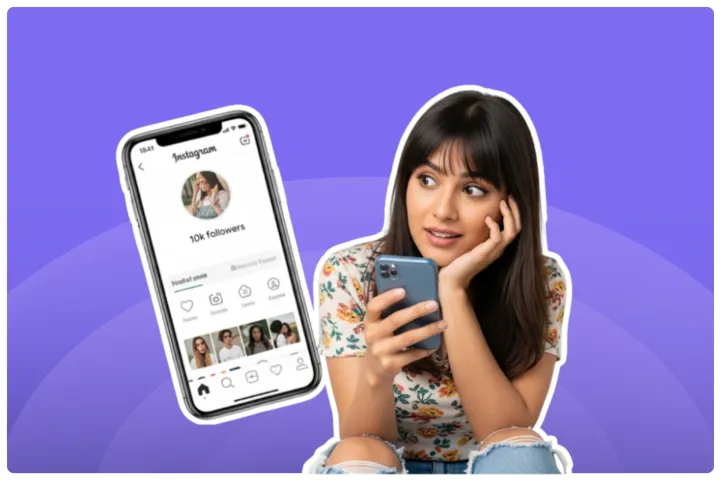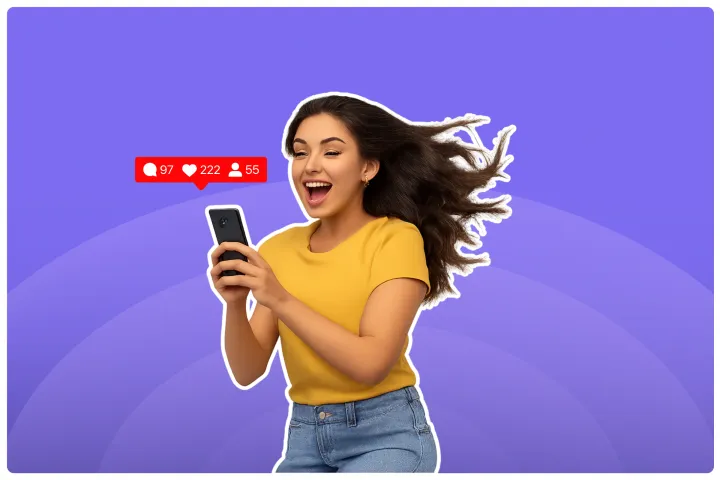Impact Of Influencer Marketing On Consumer Behaviour
Learn about the significant role of influencers in shaping consumer behavior. Discover how their recommendations can make or break a brand's success!
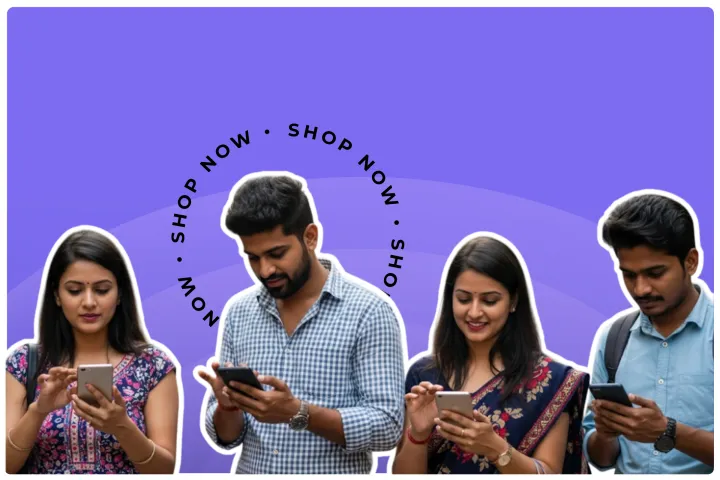
You see brands collaborating with influencers everywhere, right? From Instagram Reels showcasing the latest fashion haul to YouTube tutorials featuring new gadgets. But have you ever stopped to think about why it's so effective? It’s not just about pretty pictures or large follower counts. There's some fascinating psychology and real behavioral shifts happening behind the scenes.
Think about it. People trust people more than they trust traditional ads. When someone they follow and admire recommends a product, it feels different. It feels like a genuine suggestion from a friend. This connection is the powerhouse behind influencer marketing.
In this article, we'll break down exactly how influencers capture attention and drive action. We’ll look at the psychological triggers they activate and the real changes you can see in consumer behavior. We’ll also cover what makes an influencer truly effective and how you can use data to make your campaigns smarter. Ready to level up your marketing game? Let's go! 💪
Psychological Mechanisms Behind Influencer Impact
Why do people actually listen to influencers? It boils down to some core human psychology. Understanding these mechanisms helps you choose the right influencers and craft campaigns that genuinely connect.
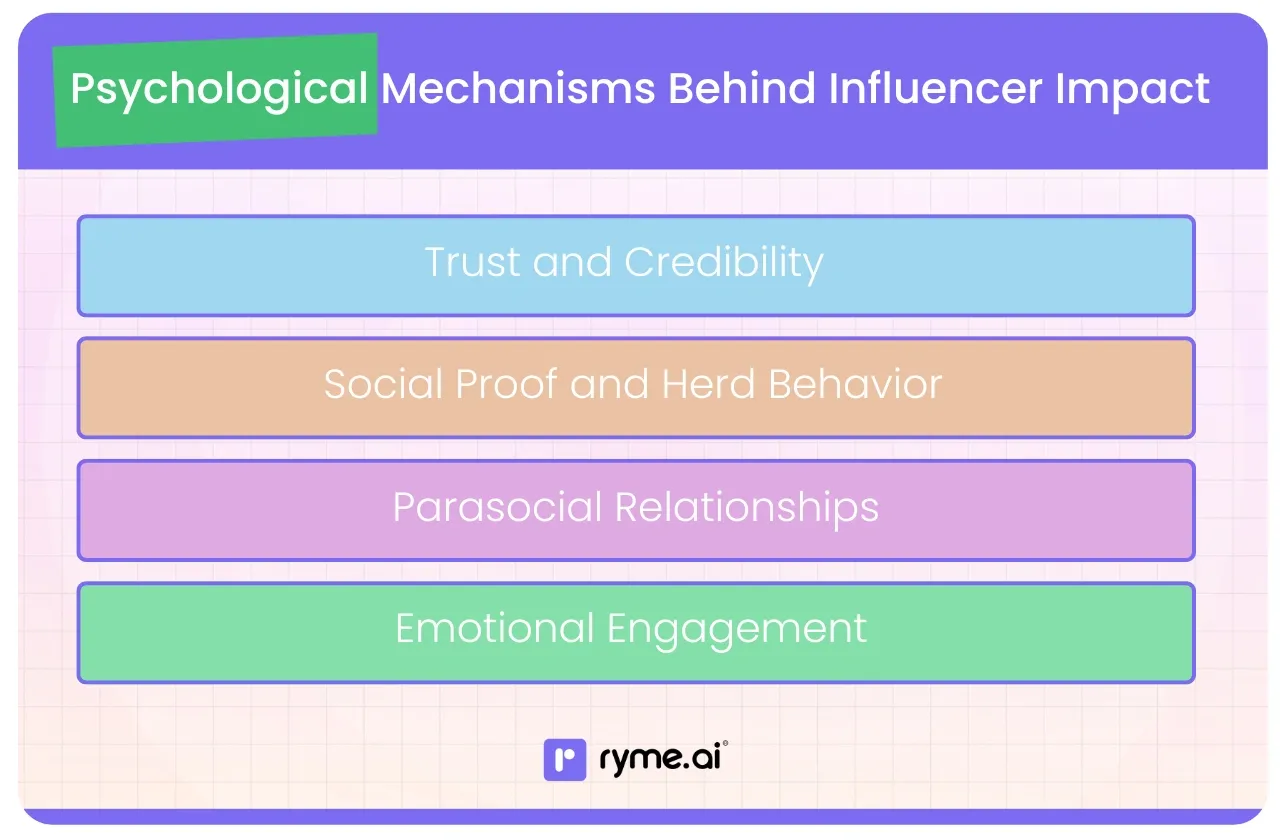
1) Trust and Credibility: The Foundation of Influence
Trust is everything in marketing. Your customers are smart. They get bombarded with ads every single day. They've built up filters. But influencer marketing often bypasses these filters. How? By building trust.
How Influencers Build Trust
1) Consistency: Influencers often share content regularly. Their audience gets used to their voice, their style, and their opinions. This consistency builds familiarity, which is a stepping stone to trust.
2) Authenticity (or the perception of it): When influencers share snippets of their daily lives, their struggles, and their honest opinions (even about sponsored products), they appear more authentic than a polished brand advertisement. They seem like real people. We'll talk more about authenticity later, it's super important!
3) Interaction: Many influencers actively engage with their followers. They reply to comments, answer DMs, and run Q&A sessions. This two-way communication fosters a sense of community and makes followers feel heard and valued, strengthening the trust bond. Imagine getting a reply from your favourite tech reviewer – you'd likely trust their future recommendations more.
4) Shared Values: Followers often choose influencers who reflect their own values, interests, or aspirations. This alignment creates an inherent sense of trust – "This person is like me, so I trust their judgment."
Transferring Trust to Your Brand
When an influencer whom followers trust recommends your product, that trust often transfers to your brand. It's like a halo effect. The positive feelings associated with the influencer now include your product. Research consistently shows this connection.
For instance, a study by Nielsen in 2022 highlighted that recommendations from known individuals remain one of the most trusted forms of advertising. While this includes friends and family, trusted influencers increasingly fall into this category for many consumers, especially younger demographics.
Think about a local Mumbai food blogger you follow religiously. They post about a new café, raving about the Vada Pav. Because you trust their taste, you're much more likely to try that café than if you just saw a random ad for it. The blogger's credibility instantly boosts the café's credibility in your eyes. For your brand, this means partnering with an influencer whose audience trusts them implicitly can give your product an immediate credibility lift. It’s powerful stuff!
2) Social Proof and Herd Behavior: Everyone's Doing It!
Humans are social creatures. We often look to others to guide our decisions, especially when we're uncertain. This is called social proof. Influencer marketing leverages this brilliantly.
How Influencers Create Social Proof
1) Visibility of Endorsement: When an influencer promotes a product, thousands (or even millions) of people see it. The sheer visibility creates a sense that "many people are interested in this."
2) Engagement as Validation: Likes, comments, shares, and saves on an influencer's post act as signals of approval from the community. A post with tons of positive comments ("OMG I need this!", "Just bought it!", "Where can I get it?") strongly suggests the product is desirable.
3) "Bandwagon Effect": Seeing others adopt a trend or use a product makes us more likely to do the same. We don't want to miss out (hello, FOMO!). Influencers are often trendsetters. When they showcase a product, it signals that it's cool, new, or worthwhile, encouraging followers to jump on the bandwagon. A 2023 report by Statista indicated that a significant percentage of social media users have purchased something based on an influencer's recommendation, showcasing the power of this herd mentality online.
Example in Action
Imagine a popular Indian fashion influencer posting a Reel wearing a specific kurta set from a local brand. The Reel gets 500,000 views, 50,000 likes, and thousands of comments asking for the link.
- Visibility: Half a million people saw the kurta set.
- Validation: 50,000+ people signaled approval or interest. The comments confirm desire.
- Herd Behavior: Seeing the buzz makes other followers think, "Wow, this kurta is really popular, maybe I should check it out too." They click the link, driven partly by the social proof they just witnessed.
For your brand, this means an influencer campaign doesn't just reach individuals; it creates a social ripple effect. The visible enthusiasm of the influencer and their audience encourages others to consider your product.
3) Parasocial Relationships: The Friend You've Never Met
This one sounds a bit academic, but it's really simple. A parasocial relationship is the one-sided connection followers feel with an influencer (or celebrity, or even a fictional character). They feel like they know the influencer, even though the influencer doesn't know them personally.
How Influencers Foster Parasocial Relationships
- Sharing Personal Life: Influencers often share glimpses of their daily routines, homes, families, struggles, and successes. This perceived intimacy makes followers feel like they're part of the influencer's life.
- Direct Address: Using phrases like "Hey guys," "You asked, so here it is," or speaking directly to the camera creates a feeling of personal conversation.
- Relatability: Sharing common experiences, challenges, or humor makes the influencer seem more like a peer or friend.
- Consistency: Regular content updates maintain the sense of an ongoing relationship.
Impact on Brand Loyalty
Why does this matter for your brand? Because when a follower feels a connection with an influencer, they are more receptive to their recommendations. It feels less like an ad and more like advice from a trusted friend. This perceived relationship can lead to:
- Increased Brand Trust: If my "friend" (the influencer) trusts this brand, maybe I should too.
- Higher Engagement with Sponsored Content: Followers might pay more attention to sponsored posts from influencers they feel connected to.
- Stronger Brand Loyalty: The positive feelings towards the influencer can extend to the brands they consistently partner with, fostering loyalty beyond a single purchase. Research from 2024 suggests that the perceived authenticity and relatability of an influencer significantly strengthen these parasocial bonds, making their endorsements more impactful.
Think of a gaming streamer. Their viewers watch them for hours, hear their commentary, see their reactions, and interact in the chat. They develop a sense of camaraderie. When that streamer recommends a gaming chair or a headset they genuinely seem to use and like, viewers who feel that connection are far more likely to trust the recommendation and consider the purchase. This 'friendship' factor is a unique advantage of influencer marketing.
4) Emotional Engagement: Connecting Through Feelings
Decisions, especially purchasing decisions, are often driven by emotions rather than pure logic. Influencers are masters at evoking emotions through their content.
How Influencers Evoke Emotions
1) Storytelling: Sharing personal stories, challenges overcome, or exciting experiences connects on an emotional level. A travel influencer's story about conquering a fear during a trek can be inspiring.
2) Humor: Funny Reels, witty captions, or relatable memes create positive feelings and make the influencer (and potentially the endorsed brand) more likable.
3) Aspiration: Showcasing desirable lifestyles, achievements, or aesthetics can evoke feelings of aspiration and desire. A luxury influencer showcasing a high-end product taps into this.
4) Empathy and Relatability: Sharing vulnerabilities or common struggles creates empathy and a sense of shared experience. A parenting influencer talking honestly about toddler tantrums resonates deeply with other parents.
5) Excitement and Enthusiasm: An influencer genuinely excited about a product launch or a sale can transfer that excitement to their audience.
Driving Consumer Actions
These emotional connections are powerful drivers of action:
- Joy/Excitement: Can lead to impulse purchases or trying something new.
- Aspiration: Can drive desire for products associated with a certain lifestyle.
- Trust/Comfort: Can lead to choosing a recommended product over an unknown one.
- Inspiration: Can motivate trying a new hobby, skill, or experience (often involving product purchases).
- FOMO (Fear Of Missing Out): Often driven by excitement and aspiration, leading to quick action on limited-time offers.
Consider a fitness influencer sharing their transformation journey. They evoke inspiration, determination, and relatable struggles. When they recommend the protein powder or workout gear that helped them, followers who connected emotionally with their journey are highly motivated to try those products, hoping for similar results or feeling inspired by the influencer's success. Tapping into the right emotions through your influencer collaborations can significantly boost campaign effectiveness.
Understanding these psychological pillars – trust, social proof, parasocial relationships, and emotional engagement – is the first step to unlocking the true potential of influencer marketing for your brand. It’s not just about reach; it’s about genuine connection.
Behavioral Shifts Induced by Influencer Marketing
Okay, so we know why influencer marketing works psychologically. But what does that mean for actual consumer behavior? How does it change the way people shop and interact with your brand? Let's look at the tangible shifts.
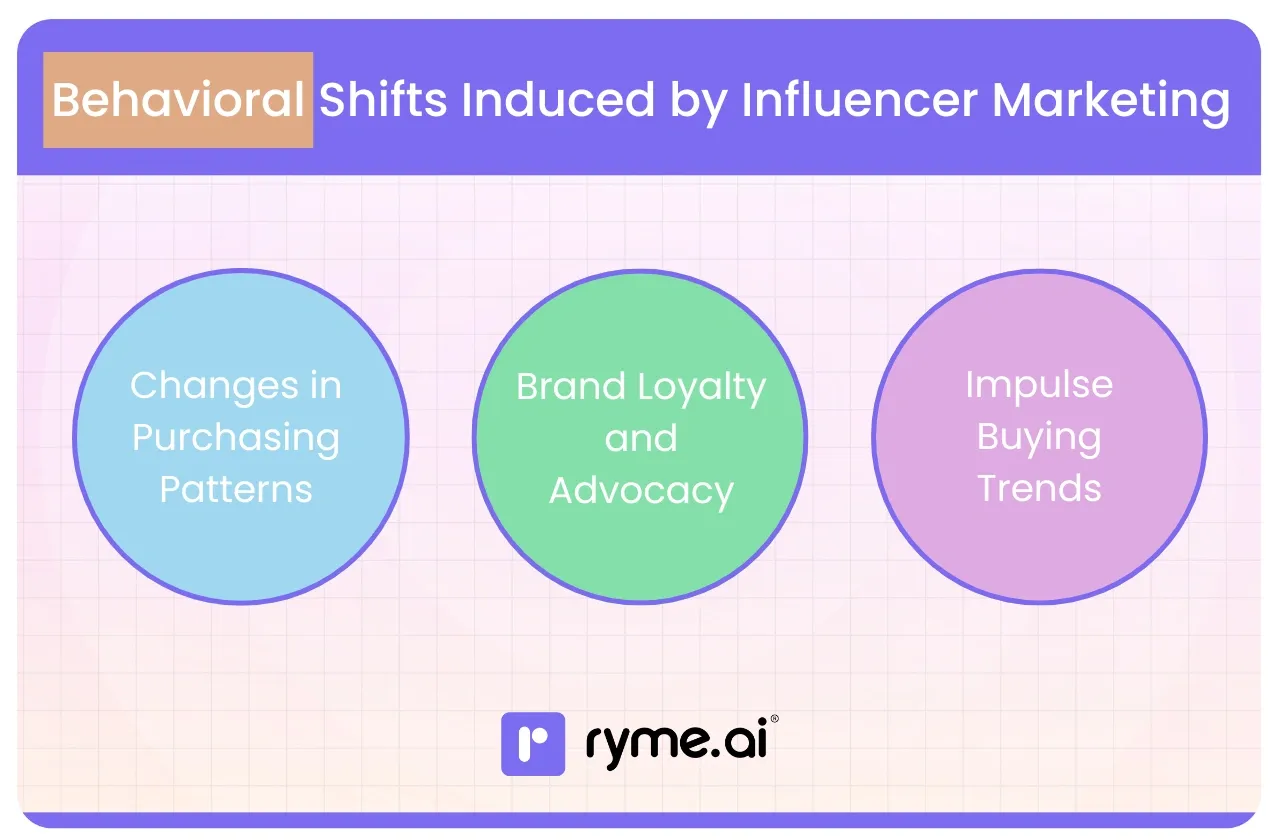
1) Changes in Purchasing Patterns: From Discovery to Decision
Influencer marketing doesn't just nudge existing preferences; it actively shapes them and creates new buying habits.
Immediate Impact: The "Swipe Up" Effect
- Direct Purchase Path: Features like Instagram's product tags, "link in bio," or swipe-up links in Stories (now link stickers!) make it incredibly easy for consumers to go from seeing a product to purchasing it. Influencers effectively shorten the sales funnel.
- Flash Sales & Limited Offers: Influencers are often used to promote time-sensitive deals or exclusive discount codes ("Use code RIA15 for 15% off!"). This creates urgency and drives immediate sales. A 2023 survey by Rakuten Advertising highlighted that a significant portion of consumers are prompted to purchase immediately when offered a discount code by an influencer.
- Product Discovery: Many consumers, particularly Gen Z and Millennials, use social media as a primary source for discovering new products and brands. Influencers act as curators, introducing followers to items they might never have found through traditional channels. Think about discovering a small, independent Indian artisan brand through an influencer's post – something a mainstream ad might miss.
Long-Term Changes
- Shifting Brand Preferences: Consistent exposure to a brand through trusted influencers can gradually shift consumer preferences. Seeing multiple fitness influencers using a specific brand of activewear might lead a consumer to choose that brand next time they shop.
- Trying New Categories: An influencer known for beauty might collaborate with a wellness brand, encouraging their followers to explore supplements or meditation apps – categories they might not have considered before.
- Normalizing Purchases: Seeing influencers incorporate certain products into their daily lives can normalize the purchase of those items, making them seem less like luxuries and more like accessible lifestyle additions.
- Example: Priya follows several sustainable fashion influencers in India. Initially, she just enjoyed the content. Over time, seeing influencers consistently showcase stylish, ethically made clothing and discuss the importance of sustainability influenced her own shopping habits. She started actively seeking out sustainable brands recommended by these influencers, shifting away from fast fashion. This wasn't an overnight change, but a gradual shift in her purchasing pattern driven by influencer content.
2) Brand Loyalty and Advocacy: Beyond the First Purchase
Effective influencer marketing isn't just about one-off sales; it's about building lasting relationships between the consumer and your brand.
Fostering Deeper Loyalty
- Consistent Positive Association: When consumers repeatedly see influencers they trust and like using and enjoying your products, it reinforces positive associations with your brand. This builds loyalty that goes beyond a single transaction.
- Community Building: Influencers often foster communities around their content. When your brand is part of that community conversation (e.g., followers discussing how they use your product based on the influencer's tip), it strengthens the bond.
- Reinforcing Brand Values: If you partner with influencers whose values align with your brand's (e.g., sustainability, body positivity, supporting local artisans), it reinforces your brand identity and attracts loyal customers who share those values. Data from Sprout Social (2023) indicates that alignment on values between consumers, influencers, and brands is increasingly important for building long-term loyalty.
Turning Consumers into Advocates
The ultimate goal? Turning happy customers into vocal brand advocates. Influencer marketing helps here too:
- Inspiring User-Generated Content (UGC): When a customer buys your product because of an influencer, loves it, and then posts about their own experience (often tagging both the brand and the influencer), that's powerful advocacy. It's authentic social proof generated by real users.
- Providing Social Validation: Seeing influencers endorse a brand gives consumers confidence not only to buy but also to publicly associate with the brand themselves.
- Word-of-Mouth Amplification: Influencers start conversations. Happy customers continue them, spreading the word within their own circles, both online and offline.
- Story Time: Let's say Rohan buys a noise-cancelling headphone set recommended by his favourite tech reviewer. He loves them. He then posts an Instagram Story mentioning how great they are for his commute in Mumbai, tagging the brand and the reviewer. His friends see the Story. One of them, looking for headphones, asks Rohan about them. Rohan gives a glowing review. Boom – the initial influencer endorsement led not just to a sale, but to organic advocacy and potentially another sale. That's the loyalty and advocacy loop in action!
3) Impulse Buying Trends: The "I Need It Now" Phenomenon
Influencer marketing, combined with the features of social media platforms, has undoubtedly fueled impulse purchasing.
Factors Driving Impulse Buys
- Visual Appeal & Desire: Influencers excel at making products look desirable through high-quality photos, engaging videos (like Reels), and demonstrating their use in aspirational contexts. This visual stimulation can trigger an immediate desire.
- Ease of Purchase: As mentioned, the seamless integration of shopping features on platforms like Instagram removes friction. A few taps are all it takes to buy something showcased in a post or Story.
- FOMO & Urgency: Limited-time discount codes, "exclusive drop" announcements, or simply seeing something trendy creates a fear of missing out, prompting quick, often unplanned purchases. A 2024 study focusing on social commerce trends noted the significant role of influencer-driven urgency tactics in accelerating purchase decisions.
- Emotional Triggers: Content designed to evoke excitement, happiness, or aspiration can lower rational purchasing barriers, making viewers more susceptible to impulse buys. Think of "unboxing" videos that build anticipation and excitement.
The Platform Effect
Platforms like Instagram and TikTok, with their algorithmically driven feeds and short-form video formats, are particularly effective at triggering impulse buys. An endless scroll of visually engaging content featuring products recommended by relatable creators makes it easy to stumble upon something appealing and purchase it on the spot.
Example: Anjali is scrolling through Instagram Reels. She sees a beauty influencer she follows demonstrate a new "quick glow" face serum. The lighting is perfect, the influencer's skin looks amazing, and she mentions a special 20% discount code valid only for 24 hours using a link sticker. Anjali wasn't planning to buy skincare, but the visual appeal, the influencer's enthusiasm, and the limited-time offer create an urge. She clicks the link and buys the serum right then and there. That’s influencer-driven impulse buying.
Understanding these behavioral shifts – changes in purchasing patterns, the growth of loyalty and advocacy, and the rise of impulse buys – helps your brand tailor influencer campaigns to achieve specific outcomes, whether it's driving immediate sales, building long-term customer relationships, or boosting brand visibility through trends.
The Role of Influencer Attributes
Not all influencers are created equal, and not every influencer is right for your brand. Certain attributes make influencers particularly effective at connecting with audiences and driving results. Let’s break down what really matters.
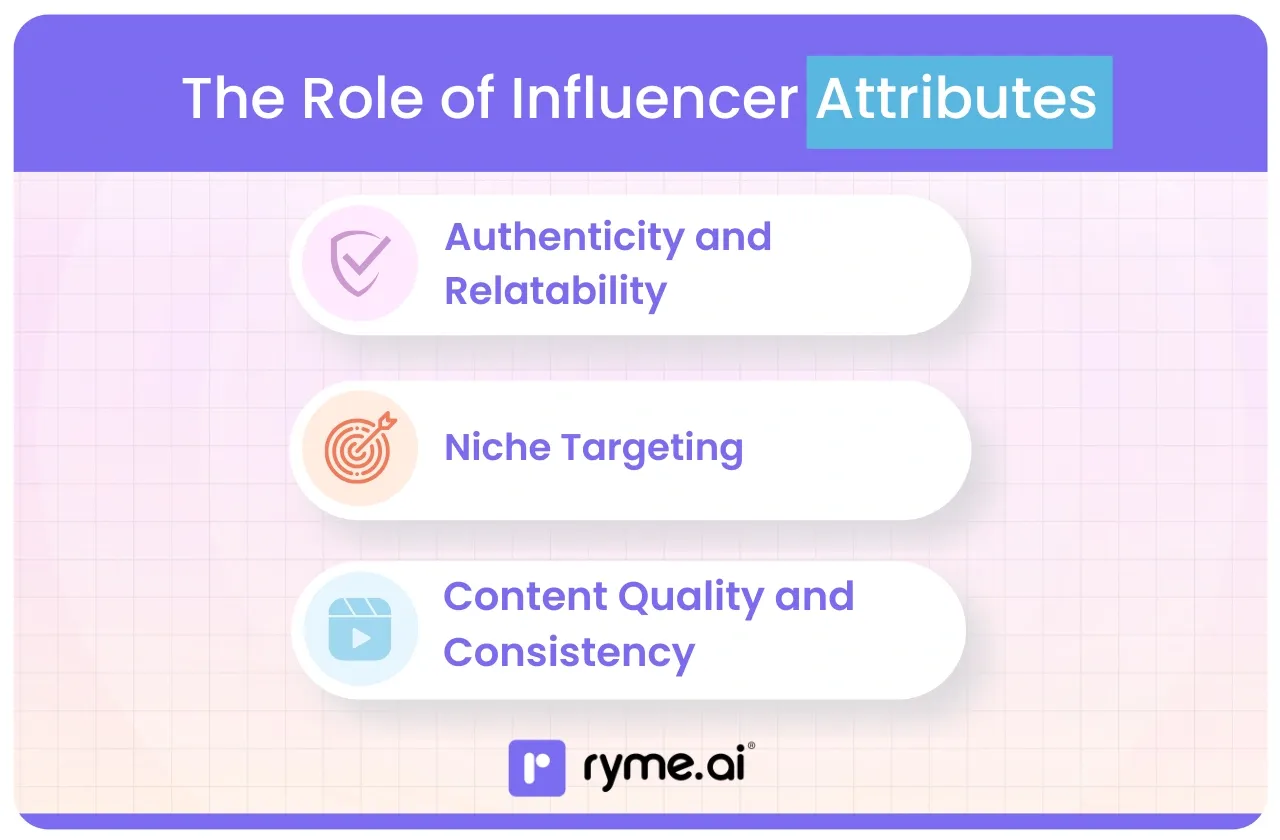
1) Authenticity and Relatability: Keeping It Real
These two attributes are arguably the most crucial for building trust and connection. Today's consumers, especially Gen Z, have a sharp eye for fakeness.
What is Authenticity?
In the influencer context, authenticity means being genuine, transparent, and true to oneself. It’s about:
- Honest Opinions: Sharing balanced views, even admitting when a product isn't a perfect fit (while still respecting brand partnerships). Overly positive, scripted reviews often ring hollow.
- Transparency: Clearly disclosing sponsored content (#ad, #sponsored, #partner). In India, the Advertising Standards Council of India (ASCI) has specific guidelines for influencer disclosures (updated recently, worth checking!), and audiences appreciate this honesty. It builds trust rather than eroding it when done upfront.
- Consistent Voice: Maintaining a consistent personality and style across content, rather than drastically changing based on sponsorships.
- Showing Imperfections: Sharing relatable struggles or behind-the-scenes moments, not just a highlight reel.
Why Relatability Matters
Relatability is about the audience seeing aspects of themselves or their aspirations in the influencer. This could be through:
- Shared Interests: Following someone passionate about the same niche (e.g., indie music, specific video games, vegan cooking).
- Similar Life Stages: Connecting with influencers going through similar experiences (e.g., new parents, students, entrepreneurs).
- Shared Values: Aligning on broader principles like sustainability, mental health awareness, or cultural identity.
- Achievable Aspiration: Showcasing a lifestyle that feels aspirational yet potentially attainable, unlike distant celebrity lifestyles.
The Power Combo
When an influencer is both authentic and relatable, their recommendations carry immense weight. Followers feel they're getting advice from a trusted peer who understands them. A 2023 study by Influencer Marketing Hub confirmed that authenticity is a top factor consumers consider when deciding whether to trust an influencer's recommendation.
Example: Think about an Indian influencer focusing on mid-range fashion finds from local markets or online stores, maybe showing how she styles affordable pieces for everyday wear. She's transparent about costs, occasionally mentions an item didn't fit well, and shares her shopping experiences in relatable settings (like bustling Mumbai markets). Her followers trust her because she feels real and her lifestyle seems attainable. Her recommendations for a ₹1500 kurta are likely more impactful for her audience than a celebrity endorsing a ₹50,000 designer outfit.
For your brand, prioritizing influencers who genuinely align with your brand values and whose audience perceives them as authentic and relatable is key for campaigns that resonate deeply.
2) Niche Targeting: The Power of Micro and Nano Influencers
While mega influencers with millions of followers offer broad reach, smaller influencers often provide more targeted impact.
Understanding Influencer Tiers
- Mega/Macro: Typically 100K/500K+ followers. Offer massive reach, good for brand awareness. Can be very expensive.
- Micro-Influencers: Roughly 10K - 100K followers. Often specialize in a specific niche. Tend to have higher engagement rates than macro-influencers.
- Nano-Influencers: Usually under 10K followers. Highly niche focus. Often have the strongest connection and trust with their small but dedicated audience. Seen as peers or local experts.
Why Go Niche?
Partnering with micro and nano influencers offers several advantages for brands:
- Hyper-Targeted Audience: These influencers cater to very specific interests (e.g., gluten-free baking in Bangalore, specific board games, ethical skincare for sensitive skin). Your message reaches an audience already highly interested in your product category.
- Higher Engagement Rates: Smaller audiences often mean more interaction. Micro and nano influencers frequently have higher engagement rates (likes, comments, shares relative to follower count) because their followers feel a closer connection. Recent benchmarks (like those from Klear or HypeAuditor, often updated yearly) consistently show this trend.
- Greater Perceived Authenticity & Trust: Recommendations from nano or micro influencers can feel more like genuine advice from a friend rather than a paid celebrity endorsement.
- Cost-Effectiveness: Working with micro/nano influencers is significantly more affordable than macro influencers. You can partner with multiple niche influencers for the cost of one large one, diversifying your reach within relevant communities. Imagine your budget stretching to cover 10 nano-influencers focused on sustainable living across different Indian cities, instead of one macro lifestyle influencer.
- Access to Untapped Markets: They can help you reach specific local communities or highly specialized interest groups that larger campaigns might miss.
- Example: A brand selling specialized art supplies wants to reach serious watercolor artists in India. Instead of partnering with a general lifestyle influencer, they collaborate with 5 micro-influencers known specifically for their watercolor tutorials and workshops. These influencers have smaller followings (maybe 15K each), but nearly 100% of their audience is interested in watercolor painting. The campaign is highly relevant, generates quality engagement from passionate artists, and drives targeted traffic to the brand's website, likely resulting in a better ROI than a broader, more expensive campaign.
3) Content Quality and Consistency: Professionalism Matters
Even with authenticity and the right niche, the actual content needs to hit the mark.
Why Quality is Crucial
- Captures Attention: In crowded social feeds, high-quality visuals (clear photos, well-lit videos) and audio (clear sound in Reels/videos) stand out. Poor quality content reflects badly on both the influencer and the endorsed brand.
- Builds Credibility: Professional-looking content signals that the influencer takes their work seriously, which enhances their credibility.
- Communicates Effectively: A well-structured caption, a clear demonstration in a video, or aesthetically pleasing images help convey the brand message effectively.
- Platform Appropriateness: Quality also means understanding what works best on each platform (e.g., engaging vertical video for Reels/TikTok, high-resolution photos for Instagram posts, in-depth videos for YouTube).
The Importance of Consistency
- Audience Expectation: Followers get used to an influencer's posting schedule and content style. Consistency keeps them engaged and coming back for more. Irregular posting can lead to audience drop-off.
- Building Habits: Consistent content delivery builds a habit in the audience, making them part of the influencer's regular audience.
- Reinforcing Trust: Consistency in message, values, and quality over time reinforces the trust relationship.
- Algorithm Favor: Social media algorithms often favor accounts that post consistently.
- Example: Imagine two food bloggers. Blogger A posts sporadically, sometimes with blurry phone photos, sometimes with professional shots. Their captions vary wildly in tone. Blogger B posts three high-quality recipe Reels every week, always with clear instructions, great lighting, and their signature cheerful style. Audiences (and brands) are likely to trust and engage more with Blogger B due to their quality and consistency.
When selecting influencers, look at their overall feed, not just one post. Assess their typical content quality and their posting frequency. Partnering with influencers who value professionalism and consistency ensures your brand is represented well and the campaign message is delivered effectively over time.
Considering these attributes – authenticity, relatability, niche focus, quality, and consistency – will help you choose influencer partners who can genuinely connect with their audience and drive meaningful results for your brand.
Data-Driven Insights for Brands
Okay, you've picked great influencers, and they're creating amazing content. But how do you know it's working? And how can you make your next campaign even better? The answer lies in data. Moving beyond guesswork and using analytics is key to maximizing your influencer marketing success.
1) Consumer Behavior Analytics: Understanding the Response
Likes and follower counts are just vanity metrics. You need to dig deeper to understand how consumers are actually responding to your influencer campaigns.
Key Metrics to Track
- Engagement Rate: This is crucial. It's (Likes + Comments + Shares + Saves) / Followers * 100%. A high engagement rate (relative to the influencer's size and niche) indicates an active and interested audience. Look for comments that show genuine interest or purchase intent ("Where can I buy this?", "Just ordered mine!"). Platform analytics (like Instagram Insights) provide this.
- Reach & Impressions: Reach is the number of unique accounts that saw the content. Impressions are the total number of times the content was displayed. High reach means broad visibility. Comparing reach across different influencers or posts helps understand what content travels furthest.
- Click-Through Rate (CTR): If your goal is website traffic or direct sales, track how many people clicked the link provided (in bio, Story sticker, etc.). This is usually measured using UTM parameters (custom URLs trackable in Google Analytics) or platform-specific analytics if available. A low CTR might suggest the call-to-action wasn't clear or compelling.
- Conversion Rate: The ultimate goal for many campaigns. How many people who clicked the link actually made a purchase, signed up, or completed the desired action? This requires tracking from the click through to the final conversion, often using unique discount codes or affiliate links tied to specific influencers.
- Audience Demographics: Who is actually seeing and engaging with the content? Does the influencer's audience match your target customer profile (age, location, interests)? Instagram Insights and other third-party tools provide audience data. Ensure the influencer's audience isn't inflated with bots or irrelevant followers. Look for reports like HypeAuditor's Audience Quality Score (AQS).
- Sentiment Analysis: What's the tone of the comments? Are they positive, negative, or neutral? Tools can help analyze comment sentiment at scale, giving you qualitative insights into how the campaign is being received. Positive sentiment strongly correlates with brand lift.
Leveraging the Insights
By tracking these metrics, you can understand:
- Which influencers drive the most engagement or conversions for your brand.
- What type of content (Reels, Stories, static posts, tutorials, reviews) resonates best with the target audience.
- Which calls-to-action are most effective.
- Whether the campaign is reaching the right people.
- This information is gold for refining your strategy.
2) ROI Measurement: Was It Worth It?
You need to justify your marketing spend. Measuring the Return on Investment (ROI) of influencer campaigns is crucial, though it can sometimes be tricky.
Methods for Measuring ROI
- Unique Discount Codes/Affiliate Links: This is the most direct method for tracking sales. Assign a unique code (e.g., "ANNA10") or trackable link to each influencer. Tally the sales generated using these codes/links. ROI = [(Revenue Generated - Campaign Cost) / Campaign Cost] * 100%. For example, if a campaign cost ₹50,000 and generated ₹1,50,000 in sales via codes, the ROI is [(1,50,000 - 50,000) / 50,000] * 100% = 200%.
- UTM Parameters: Use unique URLs for each influencer's link (creatable via Google's Campaign URL Builder). Track the traffic and conversions from these specific links in your Google Analytics. This helps attribute website visits and goal completions (like sign-ups or purchases) back to specific influencer posts.
- Campaign-Specific Landing Pages: Direct influencer traffic to dedicated landing pages. Track visits and conversions on these pages.
- Correlating Sales Lifts: Look for noticeable increases in overall website traffic or product sales during the campaign period. While less precise (other factors could be involved), a significant lift coinciding with campaign activity is a positive indicator.
- Brand Lift Studies: For awareness-focused campaigns, use surveys before and after the campaign to measure changes in brand awareness, perception, and purchase intent among the target audience. This often requires a larger budget and specialized tools or agencies.
- Earned Media Value (EMV): This metric estimates the value of the engagement and exposure generated by the campaign if it had been paid advertising. While not a direct ROI measure, it helps quantify the reach and buzz created. Several platforms calculate EMV.
Setting Clear Goals
Before launching, define what success looks like. Is it direct sales? Website traffic? Brand awareness? Sign-ups? Setting clear Key Performance Indicators (KPIs) makes ROI measurement more focused and meaningful. Not every campaign needs direct sales ROI; an awareness campaign's success might be measured by reach and engagement lift.
3) Campaign Optimization: Getting Smarter Over Time
Influencer marketing isn't a "set it and forget it" strategy. Use the data you gather to continuously improve.
Strategies for Optimization
- Refine Influencer Selection: Double down on partnerships with influencers who consistently deliver strong results (based on your KPIs). Reconsider working with those whose performance is subpar, even if they have a large following. Maybe micro-influencers performed better than a macro one for your specific goal.
- Adjust Content Formats: Did Reels significantly outperform static posts? Did Q&A sessions drive more engagement than tutorials? Allocate more resources to the content formats that demonstrably work best for your audience and goals.
- Tweak Messaging & Calls-to-Action (CTAs): Analyze which captions or CTAs led to higher CTRs or conversions. Was "Shop Now" better than "Learn More"? Did mentioning the discount upfront boost clicks? Experiment with different messaging approaches.
- Optimize Timing: Did posts published on weekends perform better than weekday posts? Test different posting times based on when your target audience is most active online (influencer insights can help here).
- A/B Testing: Where possible, test variations. Have two similar influencers use slightly different CTAs or post formats and compare the results.
- Budget Allocation: Shift your budget towards the strategies, influencers, and content types that provide the best return based on your ongoing analysis.
Continuous Learning Loop
Think of it as a cycle: Plan -> Execute -> Measure -> Analyze -> Optimize -> Plan... Each campaign provides valuable data that informs the next, making your influencer marketing efforts progressively more effective and efficient. Don't be afraid to experiment and learn!
By embracing a data-driven approach – tracking the right metrics, measuring ROI diligently, and continuously optimizing based on insights – you transform influencer marketing from a hopeful gamble into a predictable and powerful growth channel for your brand.
Leveraging ryme.ai for Effective Influencer Marketing
Now that we've covered the psychology, the behavioral shifts, the key influencer attributes, and the importance of data, you might be thinking, "This sounds great, but managing it all seems complex and potentially expensive!" That's where platforms specifically designed for influencer marketing can be game-changers.
Let's talk about how a tool like ryme.ai can help streamline your efforts and boost your results. (Hey, full transparency, while I'm explaining its potential benefits based on common platform features, always do your own due diligence to see if it's the perfect fit for your specific needs! 😉)
Think of ryme.ai as your smart assistant for navigating the influencer marketing process. Here’s how it aims to make things easier and more effective for brands like yours:
1) Affordable and Scalable Solutions: Making It Accessible
One of the biggest hurdles for many businesses, especially small and medium-sized ones in India, is the perceived cost of influencer marketing. Big celebrity names command hefty fees (running into lakhs or even crores of Rupees!). Manually finding, vetting, and managing multiple smaller influencers can also eat up valuable time and resources.
How ryme.ai Can Help:
- Cost-Effective Access: Platforms like ryme.ai often provide access to a wide database of influencers, including micro and nano influencers who are much more affordable. They might offer different subscription tiers or campaign-based pricing, making it feasible to start even with a modest budget (think starting campaigns from a few thousand Rupees, not lakhs).
- Scalability: Whether you're just dipping your toes into influencer marketing with a small pilot campaign or planning a large-scale national launch, a platform structure allows you to scale your efforts up or down as needed. You can start small, test the waters, and reinvest as you see positive ROI. No need to feel locked into massive upfront commitments.
- Efficiency = Savings: By automating parts of the process (like discovery and reporting), platforms save your team significant time. Time saved is money saved!
This focus on affordability and scalability means that powerful influencer marketing isn't just for the big players anymore. Your brand can leverage these strategies effectively too.
2) AI-Powered Influencer Matching: Finding Your Perfect Fit ✨
Remember our discussion on authenticity, relatability, and niche targeting? Finding influencers who truly align with your brand and audience is critical. Scrolling endlessly through Instagram or relying on guesswork isn't efficient. This is where AI comes in handy.
How ryme.ai's AI Works (Conceptual):
- Deep Analysis: AI algorithms can analyze vast amounts of data points – an influencer's content (keywords, image recognition, sentiment), their audience demographics (age, location, interests, estimated income level), engagement patterns, past collaborations, and even lookalike audiences compared to your existing customers.
- Smart Recommendations: Based on your campaign brief (target audience, goals, budget, brand values), the AI can sift through its database and recommend influencers who are the most relevant matches. This goes way beyond just follower count or basic category. It looks for genuine alignment.
- Vetting & Fraud Detection: Good AI can also help flag influencers with suspicious follower growth, low engagement quality, or a history of partnering with competing brands, helping you avoid costly mistakes.
Using AI for matching means you spend less time searching and more time building relationships with genuinely suitable creators who can drive real results. It increases the likelihood of finding those authentic, niche influencers we talked about earlier.
3) Real-Time Analytics: Tracking Performance Instantly 📊
We stressed the importance of data and analytics. Manually compiling reports from multiple influencers across different platforms is tedious and time-consuming. Integrated platforms offer a huge advantage here.
How ryme.ai Provides Insights:
- Centralized Dashboard: Imagine seeing key metrics for all your active influencer campaigns in one place – reach, engagement, clicks, conversions (if tracked via platform methods), spending, and estimated ROI.
- Real-Time Updates: No more waiting for influencers to send screenshots or end-of-campaign reports. Platforms like ryme.ai often track performance in near real-time (or with minimal delay), allowing you to see what's working (or not) much faster.
- Actionable Reports: The platform can generate easy-to-understand reports, highlighting key performance indicators and trends. This makes it simpler to analyze results and make those crucial optimization decisions we discussed. Which influencer's Reel generated the most clicks yesterday? The dashboard should tell you.
This immediate access to performance data empowers you to be agile, shift budgets quickly, and optimize campaigns on the fly for better outcomes.
4) Streamlined Content Approval: Hassle-Free Collaboration ✅
Managing the back-and-forth of content approvals, feedback, revisions, and ensuring compliance (like proper #ad disclosure) can be a major headache, especially when working with multiple influencers.
How ryme.ai Simplifies Workflow:
- Centralized Communication: Instead of juggling emails, WhatsApp messages, and DMs, the platform can provide a dedicated space for communication between your brand and the influencer regarding campaign briefs, content drafts, and feedback.
- Structured Approval Process: You can set up workflows where influencers submit content for review directly through the platform. Your team can approve, reject, or request specific revisions clearly and efficiently. This creates a documented trail and ensures everyone is on the same page.
- Compliance Checks: Some platforms might even have features to remind influencers about necessary disclosures or check content against basic brand guidelines, reducing compliance risks.
Streamlining this process saves immense time, reduces misunderstandings, and helps get campaigns live faster while ensuring brand safety and consistency. Using a dedicated platform like ryme.ai can essentially act as your specialized influencer marketing command center, bringing together discovery, management, analytics, and workflow tools to make your campaigns more efficient, effective, and data-driven. It helps bridge the gap between understanding the potential of influencer marketing and actually executing it successfully.
Conclusion: Your Next Steps in Influencer Marketing
So, there you have it! We've journeyed through the fascinating reasons why influencer marketing connects so deeply – tapping into trust, leveraging social proof, building unique relationships, and sparking emotions. We've also seen how these psychological triggers translate into real-world behavioral shifts, changing how consumers discover products, develop brand loyalty, and even make impulse purchases.
We learned that the magic isn't just about follower numbers; it's about finding influencers who embody authenticity and relatability, target the right niche for your brand, and consistently deliver high-quality content. And crucially, we saw how using data – analyzing consumer responses, measuring ROI, and continuously optimizing – transforms your campaigns from hopeful shots in the dark into strategic, measurable initiatives.
Influencer marketing, when done thoughtfully and strategically, offers an incredible opportunity for your brand to build genuine connections, drive meaningful engagement, and achieve tangible business results. It’s about collaborating with creators who can authentically weave your brand story into theirs, reaching audiences in a way traditional advertising often can't.
Don't feel overwhelmed! Start small, focus on building genuine relationships with the right influencers, track your results, and learn as you go. Tools like ryme.ai can certainly simplify the process, offering affordable and scalable ways to find partners, manage campaigns, and access valuable data.
The key is to approach influencer marketing not just as a transaction, but as a way to build community and trust around your brand. Are you ready to harness this power? 😊
Actionable Checklist & Key Takeaways:
Here’s a quick rundown to get you started or refine your current strategy:
✅ Define Clear Goals: What do you want to achieve? (Sales? Awareness? Traffic? Sign-ups?) Set specific KPIs.
✅ Prioritize Authenticity & Relatability: Look beyond follower counts. Does the influencer feel genuine? Do they align with your brand values? Would your target audience relate to them?
✅ Leverage Niche Targeting: Don't underestimate micro and nano influencers! Their engaged, specific audiences can offer fantastic ROI, especially on a budget.
✅ Focus on Quality & Consistency: Review an influencer's overall feed, not just highlights. Ensure their content quality and posting schedule align with your brand standards.
✅ Insist on Transparency: Ensure influencers comply with disclosure guidelines (like ASCI in India). Trust requires honesty.
✅ Track Key Metrics (Beyond Likes!): Monitor engagement rate, reach, CTR, conversions, audience demographics, and sentiment. Use UTMs and unique codes!
✅ Measure Your ROI: Choose a method (codes, links, analytics) to understand the return on your investment.
✅ Optimize Continuously: Use data insights to refine influencer choices, content formats, messaging, and budget allocation. It’s a learning process!
✅ Streamline Your Workflow: Consider using platforms like ryme.ai to simplify influencer discovery, campaign management, analytics, and content approval, saving you time and effort.
✅ Build Relationships: Treat influencer partnerships as collaborations, not just transactions. Foster good communication and mutual respect.
